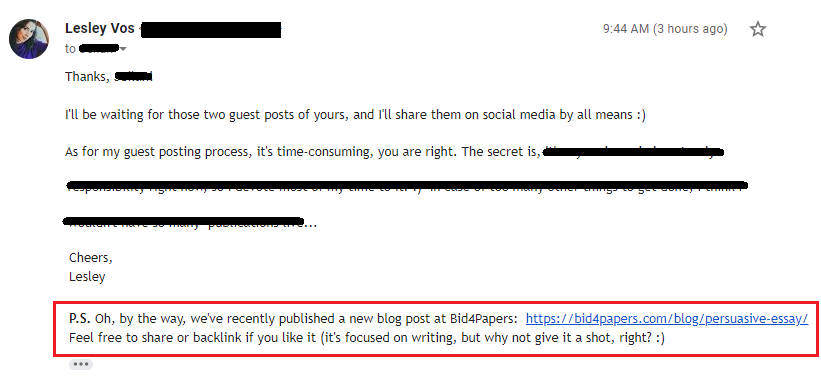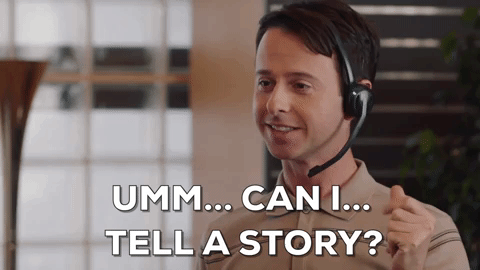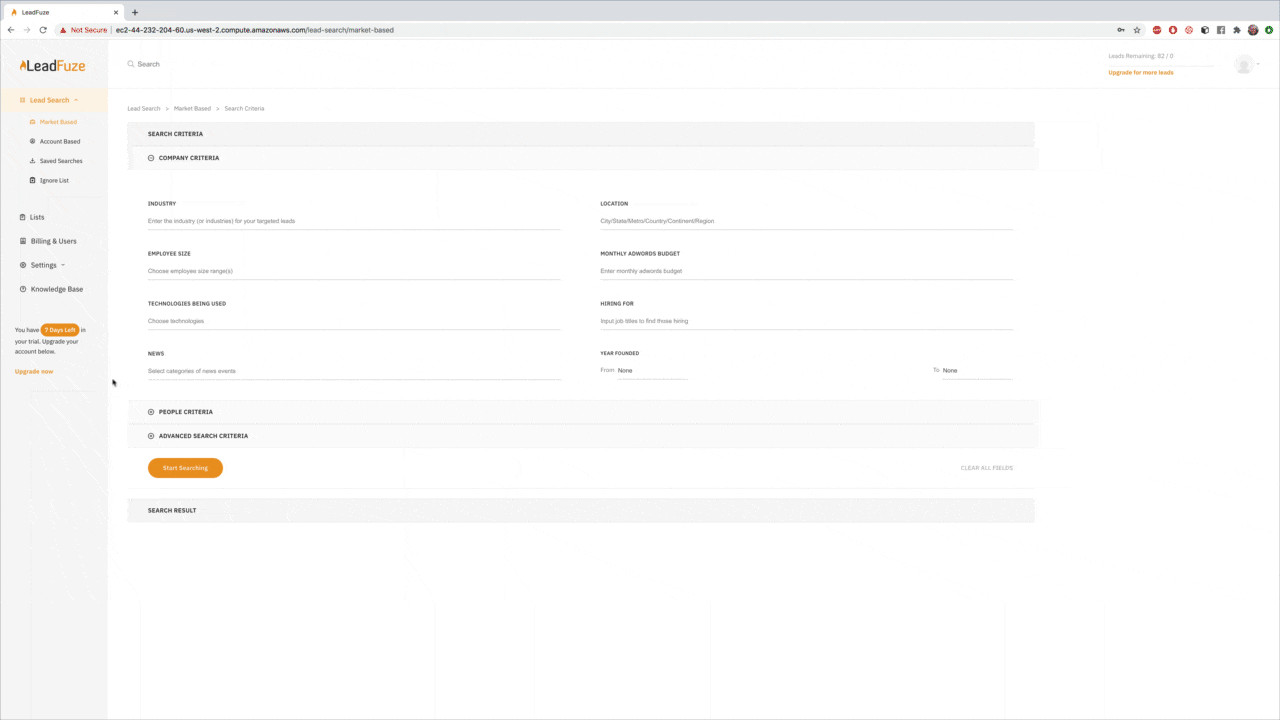What is a Cold Email?
A cold email is an email that you send to someone you don’t know or who doesn’t expect it. The recipient may have an interest in what you are selling or promoting but has not expressed it to you.
Wondering what it takes to write an effective cold email that gets results? There are a few things you should remember:
The person you send a cold email to may or may not know you. So it’s important that the email is not intrusive and gets straight to the point. It should have a specific goal in mind, like making an introduction or following up on a contact.
A cold email is typically less formal than emails sent after established connections have been made through phone calls, meetings, etc.
Before we discuss the step-by-step process for writing an effective cold email, you may be keen to know what type of cold email you should send out for what scenario and goal:
7 Types of Cold Emails to Send
To give you a proper cold email introduction, here are the different types of cold emails:
1. Introduction cold email
This type of email is used to introduce yourself as the sender to someone who doesn’t know you.
For example: “I am Tom Wilson, the president of XYZ company. I read an article that mentioned your work in AI and was impressed by it.”
In an introduction email, your main purpose is to introduce yourself and then try to start a conversation by asking for their insight.
The introduction cold email should have no more than three paragraphs or one page in length. That’s how to cold email the right way!
It is best if you can provide some context about why you are contacting this person without dropping too much detail on them right away.

2. Follow up cold email
It’s an email you send to an individual after you have already initiated contact with them, and they have not responded.
In this type of email, your main goal is to keep the conversation going by indicating that you are still interested in what their thoughts on a topic or issue are.
The follow-up cold email can be more fleshed out than the initial cold email to elaborate on how your product or service may benefit them.
A good example of a follow-up email would be:
“I am following up with you as one of our employees suggested we connect.” or “We hope that you’ve had time to think over this idea and are still interested.”
3. General cold email
This is the type of email you send to a large group of people, to introduce yourself or your company.
In this type of email, you are not contacting someone directly, and it is usually done when there’s no specific person identified for the recipient.
A good example would be: “I hope that you find our new service helpful.”
A general cold email often includes a description of the sender’s company and a summary of its services.
4. Inquiry cold email
It’s the type of email you send to someone who either has something for sale or needs a service.
A good example would be: “we are interested in learning more about your services.”
In this type of cold email, the person receiving it knows what they do and may have been looking for new business.
An inquiry cold email usually includes an inquiry about the recipient’s services, prices, and any additional information they have about their business.
5. Sales pitch cold email
This is the type of email you send to someone who is in the market for something that your company can provide.
This type of cold email usually includes a summary of what they will receive if they purchase from you and any other information pertinent to their decision-making process.
A sales pitch cold email’s main purpose is to close the sale and to get a response from the recipient.
6. Cold email after a voicemail
Now, you might be wondering: “how to write a cold call email after a voicemail?”
Take note that this is a little different from a regular cold email. A cold email after a voicemail is when you leave someone an informational voicemail and then send them an email summarizing that call.
This type of communication can be helpful because it helps to convey the information concisely as well as give the recipient something tangible they can refer back to.
7. Reintroduction cold email
It’s the type of cold email you send to someone that has already done business with you.
The main objective of this type of cold email is to re-establish a relationship and not necessarily try to make a sale or close the deal at first glance.
What differentiates a reintroduction cold email from other emails is it is not an opener, but more of a follow-up.

What Should Be Included in a Cold Email? – 6 Essential Elements
The best cold emails are personalized – tailored to the needs of a particular prospect, and follow a logical structure, with parts that serve specific goals.
To save time, stay on brand, and improve the chances of an open, it is a good practice to have a cold email template that your team uses when cold mailing prospects.
The best cold email structure has the following:
- A subject line
- Pitch (body)
- Call-to-action
- Signature
Now that you have a structure in place, let’s put some flesh on it and write a cold email that your prospect will reply to:
1. Write an attention-grabbing subject line
The subject line tells your prospect what the email is about. As well as your name/organization, it is the part of your cold email that the prospect sees before they open it. For that reason, it must grab attention.
An attention-grabbing subject in a cold email can be in the form of a question, an idea, or anything that is not done as often.
When you can grab your receiver’s attention in your cold email, they will be more likely to open and be more engaged in the rest of your email.
Struggling to come up with subject lines that encourage your recipients to click through and read your cold email? Here are 25 great cold email subject line samples you can use on your next cold sales email.
- [Product/Solution] empowers [company] like never before
- You’ll love this article, [name]
- How [company] used [product/solution] to turn their business around
- Let’s cut to the chase
- [Topic relevant to prospect] trends you should know about
- Free to talk at [date]?
- Save [number] hours per week with [product/solution]
- You missed it
- Got problems? We’ve got solutions!
- Request to connect
- Discover what’s possible with [X]
- [Name], I need your advice
- [Relevant topic] resources that can help you right now
- Where do I even start?
- What would you do with [number] more hours per week?
- Hey [name], check this out
- Remove the guesswork from [task/activity] today
- Can I help you with [reaching a specific goal]?
- Why [company]? And why now?
- Let’s talk about [topic/idea]!
- [Company] increased sales by [amount] with [product/solution]
- I am the walrus!
- 5 things you don’t know about [topic relevant to prospect]
- A [better/smarter/faster] way to [reach a specific goal]
- Quick question regarding [project]
You can find an even longer list of cold email subject line examples here.
2. Add an opening line
An opening line is important because it helps break the ice and introduce you.
It’s where you could say what company you work for, give a compliment to your receiver, include a short pitch or just state how they made an impact on your life. The possibilities are endless!
3. Open with a strong introduction
Your cold email needs an introduction because it helps the reader understand what you want or need.
An introduction is helpful because it shows your receiver that you are not wasting their time and that they should take a look at the rest of your email.
With an introduction, your cold email would be more engaging and the receiver would be more likely to respond.
How to write a cold email introduction
Imagine a cold email introduction as a short pitch. It is a brief description of the business you are trying to start and what services or products it can do.
Short and sweet, the introduction must get the reader to read the next part of your cold email, which is the all-important pitch.
With attention spans generally dwindling, you don’t have much time between the prospect opening your email and reading your pitch. So you better get to the point fast, and persuasively so.
Remember not to be too formal. A nice personalized compliment or even a joke can soften the mood and help your prospect engage with your cold email more freely.
4. Craft a compelling pitch
This is your cold email’s body that details what you are asking of the prospect. It is your pitch or value proposition. If they have read this far, it is here that you may lose the prospect’s interest. How do you avoid that?
At this point, your prospect is probably asking, what’s in it for me? So explain it to them as clearly as you can. Summarize your value proposition, explaining how your product solves a problem that they have.
Your pitch must give your reader an idea of why your offering is unique. It must show that this benefit has not been delivered before by other companies, which means they have more opportunities for success.
If you are writing a cold email for the first time, the task of crafting an irresistible pitch can be overwhelming. These formulas can get your creative juices flowing:
How to write a cold email using high-converting formulas
Not sure what to say in a cold email?
There are many formulas you can follow that can help you how to write a winning cold email.
Here are some effective formulas together with a cold email sample you can use:
-
Before-After-Bridge (BAB)
Before – Here’s your world now
After – Imagine what the world could be if you solved the problem
Bridge – Here’s how to get there
Hi, [Name]!
**BEFORE** If you’re like most companies, sales transactions increase significantly in Q3/Q4, yet most executives have no way of knowing the ROI of their commission spend.
**AFTER** [Company name + platform] allows you to customize sales plans that cut errors in payments and eliminate the pain of calculating and adjusting commissions for your reps.
**BRIDGE** If you are willing to give us 15 minutes, I can show you how on average our customers see a 19% lower sales turnover, 5% more reps hitting quota, and 37% faster sales cycles.
-
Problem-Agitate-Solve (PAS)
Problem – Identify the pain point
Agitate – Agitate the pain point
Solve – Offer a solution
Hi [Name],
**PROBLEM** I noticed on your career page that you’re looking to hire a [job position] who will [insert a task] in [platform].
**AGITATE** E** I would love a few minutes to discuss how [Company Name] removes this burden.
**SOLVE** [Company Name] helps clients like [insert some of your clients] to [reach a certain goal].
-
Attention-Interest-Desire-Action (AIDA)
Attention – Grab your recipient’s attention
Interest – Personalize your message to engage their interest
Desire – Make them desire your offer
Action – Ask for a response
Hi [Name],
**ATTENTION** Are you interested in saving your company an extra 4,200 hours of work a month?
**INTEREST** Companies like [insert company name] are doing just that by enabling [platform/software] to better their sales productivity.
**DESIRE** In addition to saving time, our clients have reported a 10% increase in rep productivity, a 31% opp-to-won conversion rate, and a 72% reply rate with our email campaigns.
**ACTION** I’d love to schedule a time to chat and show you how [product/service] can better your company. Would you have some time to connect this week?
5. Close with a clear call-to-action
It’s crucial to close your cold email as strongly as you introduced it. And there are several techniques for doing this. One is to add a clear call to action. By definition, a CTA must encourage the reader to take a specific action.
Including a call-to-action (CTA) in the cold email gets your reader to take action or to reply with their contact information or an inquiry about what you are offering them.
An effective CTA in a cold email would be something like “We can help!” followed by some brief explanation on how you can help. Even better, ask a specific question:
Adding a specific question in a cold email CTA will encourage the reader to reply by giving them an answer.
An example question in a cold email is “Do you want to improve your website’s rankings?” followed by some explanation of what will happen if they do not make changes and how their search engine placement could be improved.
6. Add a closing P.S.
A closing P.S. in a cold email is a great way to show that you are a human being and not just some faceless company trying to sell them something.
It could be “P.S.- we can help with this!” or it could also be a personal touch like “P.S.: I hope you will let us know what you think of our service.”

With what we have covered so far you should be able to write a successful cold email. Before we summarize the tips we have shared and others that are just as useful for writing cold emails that drive the desired actions:
19 Tips for Writing a Cold Email That Works
The cold email is a difficult task to master. Now here are 19 tips on how to write a cold email that works!
1. Do your research
Before sending your cold email, you should first do your research on the company that you would like to contact. Try using LinkedIn or Google for your research and be sure to take note of any information that may show on their website about how they prefer people to reach out.
2. Do not plagiarize
Be original! The worst thing anyone can do is send a cold email with copied content from another brand. This will get you nowhere. You can, however, use an online paraphrasing app to rewrite the content you like, and then further edit it to suit your brand’s voice and purpose of the email.
3. Know your prospect’s pain points
If you know their pain points, you will be able to talk about their issues and offer your solution. If you do not know the pain points of your prospect, then be sure to ask them in the email or at least mention a few things that they may experience when working with their company so that it is clear what problem you are trying to solve for them.
4. Personalize your emails
It is not necessary to include your contact information in the subject line of each email. Instead, personalize these emails with a greeting and mention how you found their company or website.
Example: Hi! I came across your article from The New York Times on this specific topic online and wanted to reach out because it would be great if I talk to you about [topic].
5. Include the person’s name in the subject line
It is a good practice to include the person’s name in the subject line so that they know who emailed them.
This will help your prospect feel more important, and it will make you seem like a professional with experience.

6. Create a personalized offer
The better you personalize your offer, the better the chances of getting a response.
Start with something specific to your prospect’s work or company and then go into more detail about why you contacted them in the first place.
7. Keep it short, sweet, and simple
A short cold email is typically more effective than a longer one.
It is easy to lose the attention of your prospect if you ramble on for too long in an email.
Make sure that each sentence has a purpose and gets straight to the point!
Stay away from any filler words like “um” or “like.”
8. Use a catchy subject line
A catchy subject line is a must when it comes to cold emailing.
It should be interesting and informative enough for the prospect to keep reading your message.
Don’t copy and paste any generic subject lines that you might find online as this could come across as spammy or inauthentic.
9. Don’t give away too much information
Giving away too much information about your product or service in the email will make it seem like you are just trying to get them on board.
This can come across as too pushy and result in a negative response from the reader.
Instead, give just enough information that they would be interested in without being bored by all the details.
10. Put your value proposition in the subject line
A value prop in the subject line of your cold email will help the person reading your email understand what you intend to offer them. This will prompt them to open it and read more of your message.
11. AB Test your subject lines
AB Testing your cold email subject lines is a good way to find out which combinations of words work best.
When testing your subject lines, it is always a good idea to do A/B testing as well as write several versions of each cold email you send out. This will help ensure that no matter what version they receive, it will resonate with them in some way or another.
12. Reference a mutual friend or connection
A mutual connection’s name can make the receiver more inclined to open the email because it makes them feel included in your network. This also means that you have a better chance of receiving an introduction from this person when they reply.
13. Use powerful phrases and words
When writing cold emails, it is important to include powerful phrases or keywords, so you can grab their attention as quickly as possible.
A powerful phrase is very effective in making your recipient want to keep reading.
14. Ask a thoughtful question
A thoughtful question is a great way to open up the conversation while still getting information from them.
If you ask an insightful or engaging question, it will encourage your recipient to respond with more detail than they would have otherwise done so without the initial outreach and engagement.
Use clear questions that are easy for them to answer, instead of complicated ones that will only result in frustration on both ends of the conversation.
Consider what they might be interested in or need to know, and then use that information when writing your email.
15. Include a compelling CTA
A compelling CTA can help you in two ways. The first is that it can encourage your recipient to take the next step in continuing the conversation with you.
The second way is that they might not be interested, but will still click on it just out of curiosity because it looks interesting or relevant to them. If this happens, then they are more likely going to read through what you have written in your email and chances are, they will be more inclined to respond.
16. Be a storyteller
Your cold email should be written in the form of a compelling story so that readers will want to read through your message and respond. Your goal is not just for them to open your email, but to have it go down their inbox without it going straight to the trash box.

17. Be clear and direct
You don’t want to sound like a robot, so be sure to use natural language and avoid corporate-speak.
18. End your message with an encouraging request
Don’t stop when you’ve gotten their attention – keep going. Be clear about what the benefits of responding would be for them too.
For example, you can say: “I look forward to hearing back from you soon.”
19. Remove all the fluff
Writing long emails can be tempting but if you want to have a better chance of being read, don’t take up too much space.
The most important thing is that your message gets the point across quickly so senders can reply right away. It’s best to include links or attachments on what they need more information about.
After editing your draft cold email, using the tips we just shared to make sure the tone is right and your offer is clear and to the point, it’s time to send it:
How to Send Cold Emails in 5 Steps
Now that you know how to write a cold email, here are the steps to follow when sending it:
1. Collect contact information
The first step is to collect the contact information of your prospects — because news flash, you can’t start an email outreach program without it.
The problem with traditional lead generation is that it’s often a numbers game. It’s easy to fall into the trap of blasting out as many emails as possible and hoping one sticks.
LeadFuze uses artificial intelligence to automatically find the best leads for your business, so you can spend more time closing sales instead of wasting time on inefficient marketing activities.
Receive highly accurate leads from real people who are ready to buy right now – no manual sorting needed! Just tell Fuzebot (LeadFuze’s AI) what you need, and it’ll do all the hard work for you.

2. Write your cold email template
Don’t just copy a B2B cold email template on the internet! Instead, find the best cold email templates you like and tweak them.
The cold call email template you choose will only serve as a guide — so make yours as unique as possible!
3. Register to an email outreach software
If you want to maximize the effectiveness of your cold emails, it’s worth investing in email outreach software that will help automate some aspects.
When choosing a system, make sure to consider how much effort is required on your end. You don’t want something too complicated or with lots of requirements — or else it’ll be more difficult for you.
Good news! Most email software can be integrated with LeadFuze — yey!
4. AB test cold email templates
One of the best ways to find out what’s working is by testing different templates. Test your emails with one group and their results against another group, splitting them up based on whether they’re getting clicks.
You’ll be able to see which cold prospecting email template resonates better — so it saves you time in the long run.
5. Optimize your performance
Use the data collected from the AB test to improve your cold email results. If you notice that the group of people who got a certain lead generation email template has more clicks, update your original copy and send it to another AB test.
Make sure you follow the tips and tricks I mentioned earlier.
Summary: How to Write Cold Emails That Get Responses
In conclusion, learning how to write a cold email is a skill that will serve you well as a professional in today’s workforce. Though cold email prospecting emails can be difficult to write, putting the time and effort into crafting an excellent one pays off tremendously.
The next time you find yourself needing to reach out for assistance or to introduce your company’s offerings, use tips from this blog post to write cold emails that are guaranteed to get responses.
Want to help contribute to future articles? Have data-backed and tactical advice to share? I’d love to hear from you!
We have over 60,000 monthly readers that would love to see it! Contact us and let's discuss your ideas!

